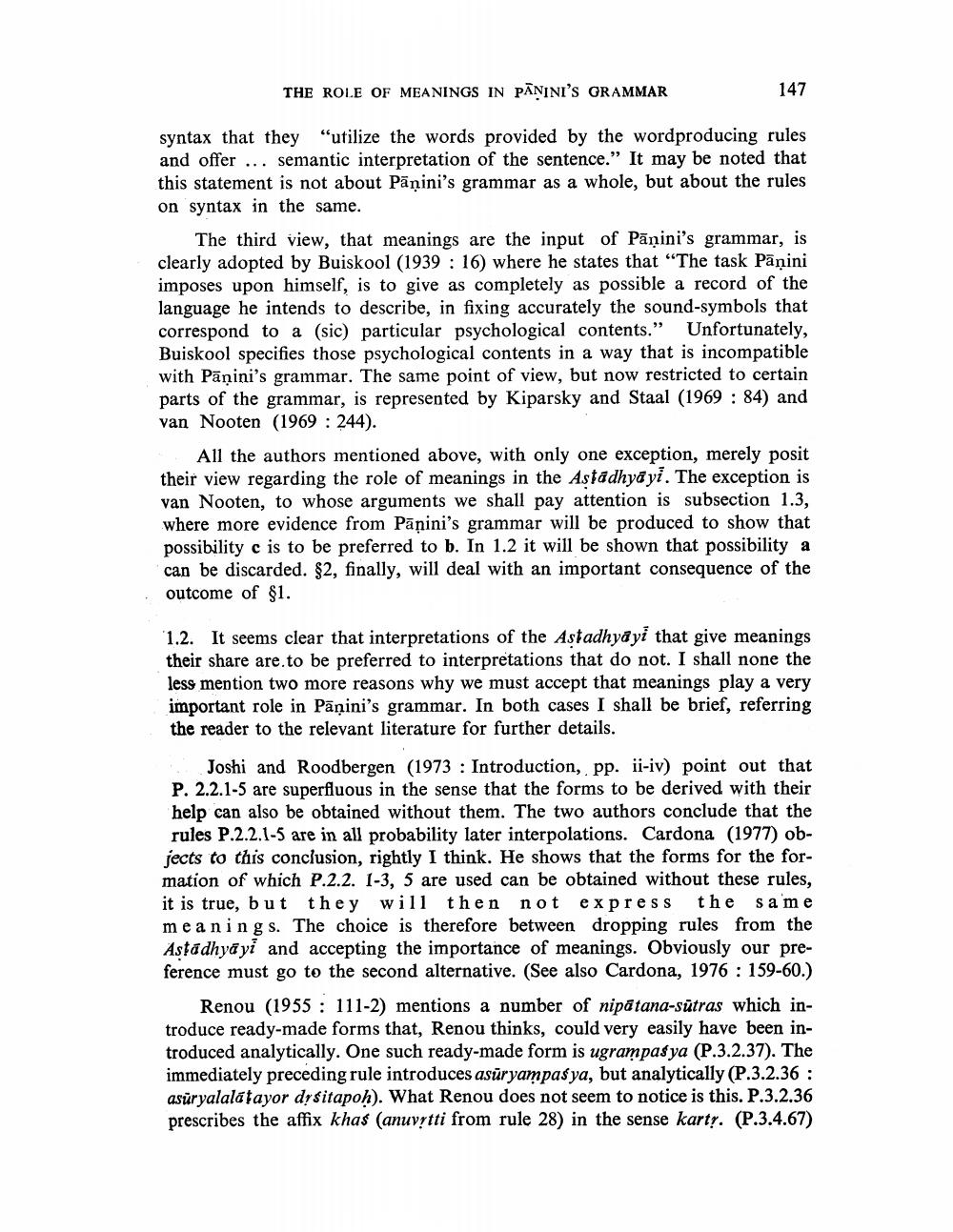Book Title: Role Of Meanings Uin Paninis Grammar Author(s): Johannes Bronkhorst Publisher: Johannes Bronkhorst View full book textPage 2
________________ THE ROLE OF MEANINGS IN PĀNINI'S GRAMMAR 147 syntax that they "utilize the words provided by the wordproducing rules and offer ... semantic interpretation of the sentence." It may be noted that this statement is not about Pāņini's grammar as a whole, but about the rules on syntax in the same. The third view, that meanings are the input of Pāṇini's grammar, is clearly adopted by Buiskool (1939 : 16) where he states that "The task Pānini imposes upon himself, is to give as completely as possible a record of the language he intends to describe, in fixing accurately the sound-symbols that correspond to a (sic) particular psychological contents.” Unfortunately, Buiskool specifies those psychological contents in a way that is incompatible with Pāṇini's grammar. The same point of view, but now restricted to certain parts of the grammar, is represented by Kiparsky and Staal (1969 : 84) and van Nooten (1969 : 244). All the authors mentioned above, with only one exception, merely posit their view regarding the role of meanings in the Astadhyā yi. The exception is van Nooten, to whose arguments we shall pay attention is subsection 1.3, where more evidence from Pāṇini's grammar will be produced to show that possibility c is to be preferred to b. In 1.2 it will be shown that possibility a can be discarded. $2, finally, will deal with an important consequence of the outcome of $1. 1.2. It seems clear that interpretations of the Astadhya yi that give meanings their share are to be preferred to interpretations that do not. I shall none the less mention two more reasons why we must accept that meanings play a very important role in Pāṇini's grammar. In both cases I shall be brief, referring the reader to the relevant literature for further details. Joshi and Roodbergen (1973 : Introduction, pp. ii-iv) point out that P. 2.2.1-5 are superfluous in the sense that the forms to be derived with their help can also be obtained without them. The two authors conclude that the rules P.2.2.1-5 are in all probability later interpolations. Cardona (1977) objects to this conclusion, rightly I think. He shows that the forms for the formation of which P.2.2. 1-3, 5 are used can be obtained without these rules, it is true, but they will then not express the same meanings. The choice is therefore between dropping rules from the Astadhyayi and accepting the importance of meanings. Obviously our preference must go to the second alternative. (See also Cardona, 1976 : 159-60.) Renou (1955 : 111-2) mentions a number of nipātana-sūtras which introduce ready-made forms that, Renou thinks, could very easily have been introduced analytically. One such ready-made form is ugrampasya (P.3.2.37). The immediately preceding rule introduces asüryampas ya, but analytically (P.3.2.36 : asüryalalátayor drsitapoh). What Renou does not seem to notice is this. P.3.2.36 prescribes the affix khas (anuvytti from rule 28) in the sense karty. (P.3.4.67)Page Navigation
1 2 3 4 5 6 7 8 9 10 11 12
